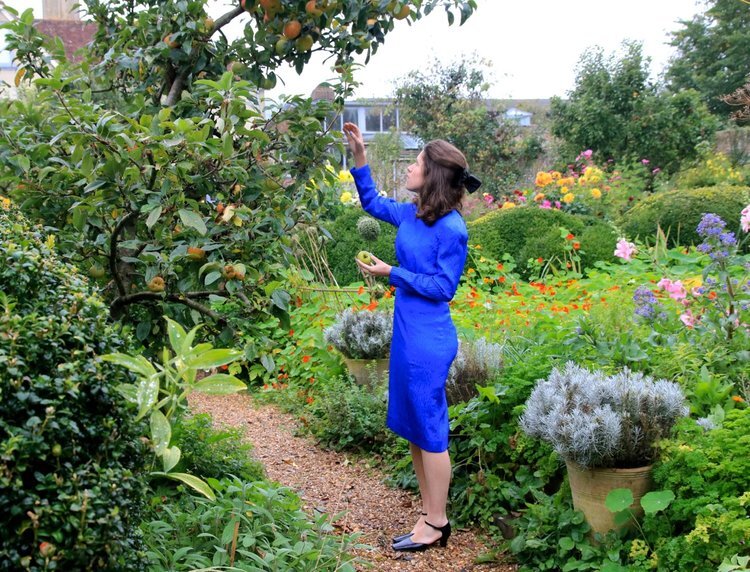Travelling in China
Palomi Kotecha shares her experiences travelling in China, along with her top tips if you are planning a visit.
China doesn’t seem to be at the top of many people’s lists when it comes to booking a holiday. Despite having a fascinating imperial history, a cuisine that’s reached almost every corner of the world and a vast and varied landscape, it has a reputation for being quite difficult and inaccessible.I’ll be honest, China wasn’t the top of my list of travel destinations when I first went in 2015. In fact, it probably wasn’t even in my top 10. If I didn’t have a boyfriend who keeps inconveniently deciding to move out there (Beijing-2, Palomi-0) I probably wouldn’t have gone for a long time, and my initial reaction to having to travel out to visit him was more ‘needs must’ than gung ho.The image that I had, and that a lot of people seem to have of China, was ‘polluted, smelly, dirty, too many people’, and if you only spend time in Beijing or one of the other major cities, that’s probably fair. If you head out of the cities however, and you absolutely should, there are so many incredible places to visit; it’s an extraordinarily beautiful place, and really unlike anywhere I’ve been before. I won’t pretend to be an expert on a country that is immense to say the least, but here is a whistle-stop tour of the worst and best bits of my two trips.
Beijing
First things first – Beijing sucks. I know that’s a wildly generalising statement, but honestly I think the city is the pits and reconfirms the worst of people’s expectations of China. The best description for it is hostile. It is polluted, dirty and you’ll do a lot of hopping out of the way of flying cigarette butts and people spitting.
That being said, I found the best places to go in and around Beijing are the ones which have a lot of green open space, including the Temple of Heaven Park, The Lama Temple, the Summer Palace, Fragrant Hills Park and 798 Art District (no green, but out of the centre and quite cool, if you like modern art…which I don’t, but it’s an interesting contrast to the rest of the city).
The subway is the easiest, cheapest way to get around the city, and you’ll avoid the traffic, but it is a rabbit warren. If you use it then plot out your route before you leave the comfort of your hotel's wifi. I had to ask for directions once and the first two people I tried literally turned their backs on me, the third (well-meaning) gentleman sent me in completely the wrong direction. If you use cabs instead, then make sure you have your destination written down in Chinese characters.Although a lot of the travel guides will list hutongs as something to visit while in Beijing, you're better off buying a history of the hutongs and settling in one of the city's hipster coffee shops instead. Most of them have been either been bricked up by the government, or horribly commercialised, (several are now home to Starbucks and McDonalds), and walking around the ones that are still residential feels more like poverty tourism than anything else. The coffee shops make for excellent people watching, especially in the 798 Art District.If you’re pushed for time then give the Forbidden City a miss, it’s not that great (don’t @ me). Although it’s listed on just about every ‘top 10 of China’ list, take it from me you’ll be missing very little if you don’t go. It is enormous, the sheer scale of it is mind-boggling, but there are almost no exhibitions on Imperial history, and limited artwork; what little there is there you will be fighting 10-deep Chinese tourists to get to, and it is all housed behind dirty plexi-glass. The only one worth seeing is the Imperial collection of clocks which are exceptionally lovely. Think parts of Versailles transplanted into Beijing. The architecture is impressive, and if you absolutely can’t leave it off your list then whizz through it and walk up to Jingshan Park which sits behind it – up a few steps is a pretty lovely view of an unlovely city.One of the best things about China is, because it is just so enormous, the food from the different provinces varies as much as if they came from completely different countries. We mostly ate in and around the residential district where Garrett lives, but one of the highlights of my second trip was trying Yunnan food at In & Out Lijiang, where the staff are exceptionally surly but the food was to die for. Be more adventurous than me and try the rice and pineapple dish which is apparently a speciality of the province...There’s also Beijing’s famous ‘Ghost Street’, which is wall to wall of hot pot restaurants. Go for a walk after dinner, in almost any neighbourhood you’ll find exercises classes and ballroom dancing taking place under the massive underpasses, and you’ll be encouraged to join in! Mostly so that they can laugh at the silly foreigner, but it does look like fun.
The Great Wall
I wanted to do one of the "wild wall” hikes, but Garrett vetoed it as I’m quite slow…instead we went to Mutianyu which is just far enough away from Beijing that you can escape the smog of the city. As with most places in China, go early to miss the crowds. Also as in most places in China, be prepared to become the tourist attraction, as being a foreigner (particularly if you’re white) is still a big deal over there. I went to the loo before we climbed the wall, and came back to a gaggle of schoolgirls asking Garrett for photos. They’d waited till I’d gone away to ask, clearly being Indian isn’t exotic enough! “Your boyfriend is so handsome, like Jason Statham!” one of them helpfully explained.We walked a bit further than the official end of the Mutianyu section of the wall, and explored some of the ‘wild wall’. Vast swathes of it have been dismantled by local villages for building materials, so much of it is crumbling away. As it is less explored it’s far more remarkable, but also a lot more precarious as there’s nothing either side of you except a sheer drop.If you go to Mutianyu you can take a toboggan ride back down to the bottom instead of climbing down or taking the cable car, which was pretty fun. Just don’t fall off!
Chengdu
Being totally honest – we barely saw the city. The only reason for going there was because - PANDAS. There are several panda sanctuaries in Sichuan province; we went to the Chengdu Research Base of Giant Panda Breeding and it was probably one of the best things I’ve ever done. Pandas are basically ridiculous drunk toddlers and I could spend hours watching them. If you’re partial to a bit of celeb spotting, the Chengdu base is also home to the panda that was the model for Po from Kung Fu Panda.Again, you’ll have to do battle with reams of Chinese tourists and the fact that the pandas go to sleep after lunch for several hours (sensible animals), so skip breakfast at the hotel, go early and grab a good lunch afterwards. We went to what is supposedly the home of Mapo Dofu. I had a great lunch – Garrett ended up with chicken feet, so order wisely.
Jiuzhaigou
This is probably one of the most beautiful places I’ve ever been to. Jiuzhaigou is a UNESCO World Heritage site, a series of valleys and mountains and populated by nine Tibetan villages – they are pretty touristy as that’s the locals’ main source of income now, but still interesting to look around. The colour of the water is like nothing I’ve ever seen, and the pictures are not photoshopped, which is definitely what I’d thought before we went.It’s so beautiful that it’s a popular pastime for couples to travel there before their wedding, to have their wedding photos taken, and we saw couples in Yangshuo and in the 798 Art District doing the same thing. Pre-wedding photography is such a huge trend over there and so competitive that couples travel abroad to do it as well.Unfortunately the region was badly hit by an earthquake in summer 2017, but the government has committed a huge amount of money to restoring it and it should hopefully reopen again soon. As with all my recommendations – start early! Before the earthquake, as many as 40,000 Chinese tourists visited the park a day (although it’s so huge you’d hardly realise), so the earlier you start the more you’ll have the place to yourself. It seems to be one of China’s best kept secrets, as we only saw two other foreign tourists in the two days we were there.It’s either a 10 hour rickety bus journey, or an hour’s flight from Chengdu to Jiuzhaigou; you’ll land at a tiny airport in the mountains, which is so rural that when we turned up two hours before our 8am flight back to Beijing it was still closed.
Guilin & Yangshuo
This was my winter 2017 trip over, and November actually turned out to be the perfect time to visit. The weather is usually c. 20-25 degrees, but it’s still considered off-season so the prices are quite low. We stayed in Guilin for one night, then took a 4 hour boat trip down the Li River to Yangshuo. The landscape is all karst mountains and rivers, and it feels a bit like you’ve wandered into a Tolkein novel, or Pandora. It is probably my favourite place in China so far. The scenery is so beautiful the government put it on the 20 yuan note, which is why almost everyone who goes there has a picture like this.We got pretty unlucky with the weather for most of the time we were there, so instead of all the hiking and cycling we planned to do, we took a leisurely bamboo raft down one of the tributaries of the Li River, which was a nice contrast to the large boat cruise from Guilin.We stayed at the Li River Resort which has a fab location overlooking the river and a brilliant restaurant. This is one of the few times I’d say definitely eat at the hotel, as the food was fabulous, and then go into the buzzy town for drinks on one of the many rooftop bars. A word of warning, there is karaoke everywhere and it is universally terrible.I also dragged a grumbling Garrett out of bed at 4am to climb Xianggong Hill to see the sunrise, but he agreed it was worth it (I think!)
Top tips:
Get your visa early – Chinese visa rules are weird and pedantic and change all the time. You’ll need several documents including a confirmation letter from your hotel and a return ticket, so make sure you leave enough time before your trip in case anything goes wrong.Be prepared to unplug. Chinese censorship is real and a pain in the arse, so unless you download a VPN you won’t be able to use a lot of things like Facebook/Instagram (!)/Twitter or Google. Also don’t make the mistake I did of trying to use Google Maps through a VPN because it is all wrong. Something I discovered trying to find the 798 Art District in Beijing and spent 45 minutes walking in the wrong direction towards the edge of the city…Express VPN is cheap and one of the best. I was out there at the same time as Trump and was hoping he’d manage to get himself arrested by illegally tweeting something outrageous. Alas.If you don’t speak any Mandarin– some kind of translation app is a must. Despite the emphasis on education, the standard of English spoken is far lower than you might expect, especially if you’re not in the major cities. Even if you do speak Mandarin, the likelihood is they'll be so surprised that you’re speaking in their language that they'll still get confused. (Happened to me with my pidgin Mandarin, but also to Garrett who is pretty fluent).Always order the aubergine. Even if you hate aubergine. Seriously.“I never imagined China would look like that” is what a lot of people said to me when I came back. Neither did I. It’s an incredibly beautiful, bonkers country, and although I wouldn’t choose to live there (and would quite like my boyfriend back), I can’t wait to go back, I’m already planning a third trip over (to Yunnan, because I can’t stop thinking about the food.)
Reading recommendations:
The Emperor Far Away, David Eimer
The Silk Roads, Peter Frankopan
Words and photos by Palomi Kotecha @pkthakkarphotos





















